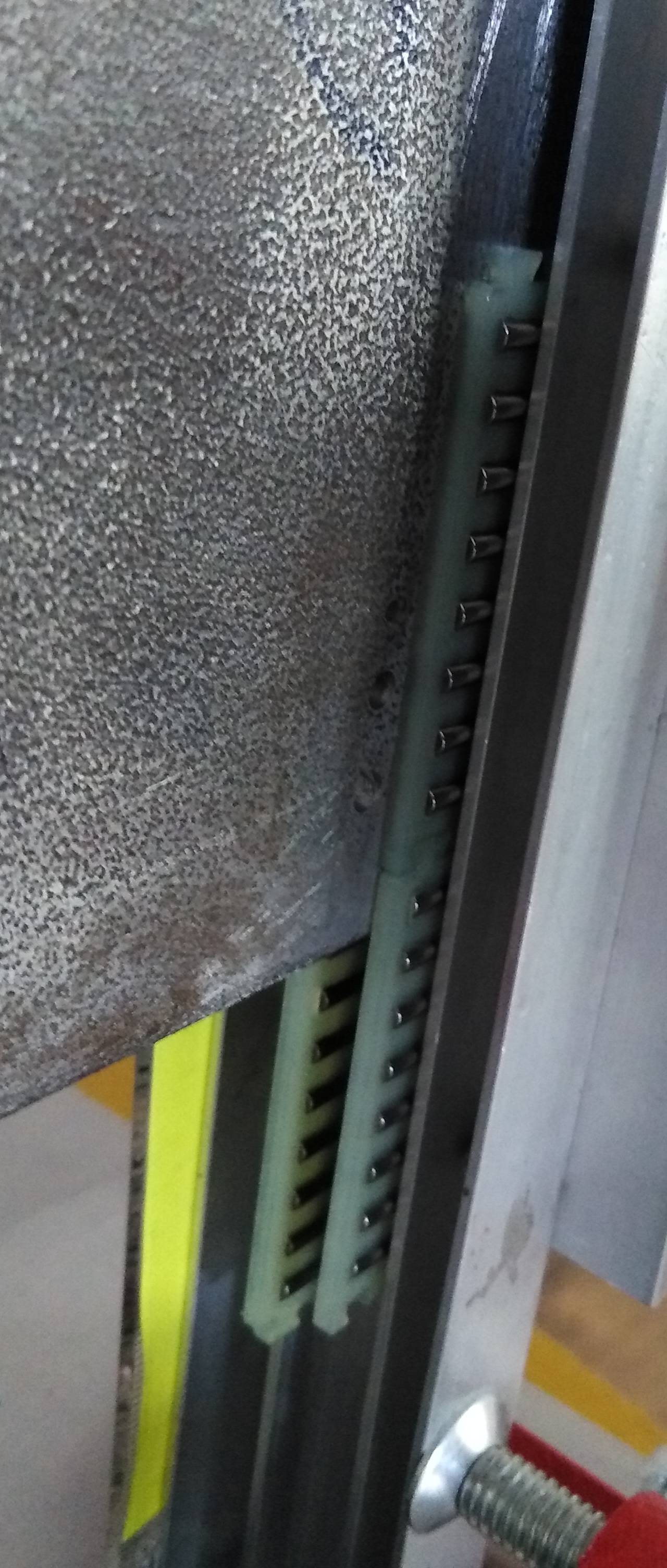First off I'm not an engineer so please excuse the simple language I use to explain my question!
I have an arrangement whereby I have a steel plate suspended from basically a bridge. The plate is free to move up and down, guided in a channel by needle rollers. The vertical movement is controlled by an M4 threaded rod, with a load cell between the top of the bridge and the M4 nut, which is screwed in and out to effect movement. Hopefully the three images will convey what I'm doing.
The steel plate and its attachments weigh ~800g. If I suspend this outside of my test jig,I get a consistent mV output in line with what I expect to see.
However, if I raise the plate via the control nut, I can get an output that works out as 970g, and going down the reading can drop to 630g. It's not always this bad, but it was easy to re-produce this range, Note, readings are taken after leaving it to settle.
Plate appears to move very freely (just by feel), and rollers are well oiled (WD40).
Can anyone explain what is happening here, and how to overcome it, or allow for it?
Thanks!
enter image description here


